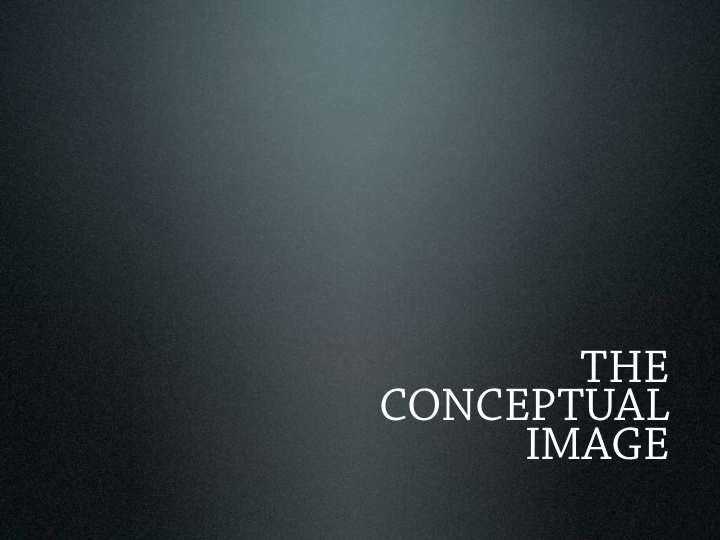



THE CONCEPTUAL IMAGE
CONCEPT: The strength of a tire is conveyed by the surreal juxtaposition of a tire and a bull elephant. Armando Testa Poster for Pirelli, 1954
CONCEPT: A synthetic hand holding a rubber ball makes an appropriate image for a trade exhibition on plastics. Armando Testa Poster for plastics exhibition, 1972
CONCEPT: One word: No! alongside an image of a bomb’s destructive forces. Tadeus Trepkowski Anti war poster, 1953
Henry Tomaszewski, 1948 Roman Cieslewicz, 1962 Jan Lenica, 1964 The Polish Poster, 1950s Poster designs opted for an aesthetically pleasing approach, escaping from the somber world of tragedy and remembrance.
Roman Cieslewicz, 1963 Roman Cieslewicz, 1964 Franiszek Starowiejski, 1973 The Polish Poster, 1960s – ‘70s A darker mood prevailed, partly owing to social restraints of a dictatorial regime, or simply despair and yearning for autonomy so often denied to Poland.
Jerzy Janiszewski, 1980 Solidarnosc (Solidarity) In 1980, shortages of basic living needs led to the formation of the Solidarity labor union. The logo was an internationally known symbol of their struggle. In 1989, elections ended one-party communist rule.
Milton Glaser, c. 1977 American conceptual images In the 1950s, photography had taken over the role of illustration through better lighting and image quality. Illustration took a more conceptual approach, putting art and words together to form a visual concept.
Milton Glaser, 1976 American conceptual images The original concept sketch for the I-heart-New- York logo, Museum of Modern Art.
Milton Glaser, 1967 Seymour Chwast, 1968 Edward Sorel, 1966 Reynolds Push Pin Studio Ruffins, 1983 Conceptual illustration began with a group of young artists from New York who sought to market their styles to advertising agencies .
Seymour Chwast Push Pin Almanack The Push Pin Studio was formed in 1954 and the Push Pin Almanac was self published to show ad agencies their illustration styles.
Seymour Chwast Anti-war poster, 1968
Seymour Chwast Museum exhibit poster, 1987
Seymour Chwast Metropolitan Printing Services poster, c. 1982
Milton Glaser Album insert poster, “Bob Dylan’s Greatest Hits,” 1966
Milton Glaser Music Festival poster, 1968
Milton Glaser Print Magazine cover, 2010
Reynold Ruffins Haskins & Sells Reports, “Helping the Arts Escape Red Ink,” 1968
Reynold Ruffins Cosmopolitan Magazine, “How to Improve Your Memory,” 1975
Reynolds Ruffins Amtrak Express Magazine, 1983
Edward Sorel Esquire Magazine cover, 1966
Edward Sorel The New Yorker magazine cover, c. 1980s
Edward Sorel The New Yorker magazine cover, 1994
Paul Rand, 1949 Conceptual illustration style Often combined the roles of graphic designer and illustrator.
Woody Pirtle, 1982 Conceptual illustration style Push Pin’s conceptual style took on regional influences, such as this Texas poster.
Woody Pirtle Conceptual illustration style Woody Pirtle continues to work out of Austin, Texas
Lou Danziger Metropolitan Museum of Art, American Paintings poster, 1966 CONCEPT Two symbols merge as one: a flag and a paint brush. Conceptual image making was not just the exclusive province of the illustrator. Graphic designers combine images with words to make memorable books covers, posters and advertisements.
Stephan Sagmeister Lou Reed poster, 1996 CONCEPT The musician’s lyrics are extremely personal, like a part of his skin. Conceptual image making was not just the exclusive province of the illustrator. Graphic designers combine images with words to make memorable books covers, posters and advertisements.
Isidro Ferrer Shakespeare’s Hamlet, book cover, 1999 CONCEPT Found objects depict a theme of royalty and revenge. Conceptual image making was not just the exclusive province of the illustrator. Graphic designers combine images with words to make memorable books covers, posters and advertisements.
Luba Lukova Peace poster, 2001 CONCEPT Changing the topic from war to one of peace. Often, the strength of a conceptual poster is that it may not need words at all.
Wes Wilson, 1966 Victor Moscoco, 1967 Wes Wilson, 1967 Psychedelic posters These posters made social statements, held antiestablishment values, celebrated rock music and psychedelic drugs.
Peter Max, 1970 Psychedelic posters This poster combines the fluid line of art nouveau with the bold contour of comic book and pop art.
Gunther Kieser, 1966 Gunter Rambow, 1976 European Visual Poets Based on imagery and manipulation through collage, montage, photography and photomechanical techniques.
Robert Massin, 1964 European Visual Poets Massin used experimental typography that combined comic book pictorials with the visual flow of the cinema in a futuristic and Dadaist manner.
Elena Serrano, 1968 The Third World poster Posters were used by developing nations for outreach campaigns and to promote ideological viewpoints.
Albert Korda, 1960 Ernesto “Che” Guevara He was killed during a gun battle in 1967 during the Cuban Revolution. He is shown here attending a memorial in Havana, Cuba for victims of an explosion.
James Fitzpatrick, 1968 Ernesto “Che” Guevara He became a powerful symbolic icon representing the struggle against oppression that was one of the most reproduced images of the late 20 th century.
Recommend
More recommend